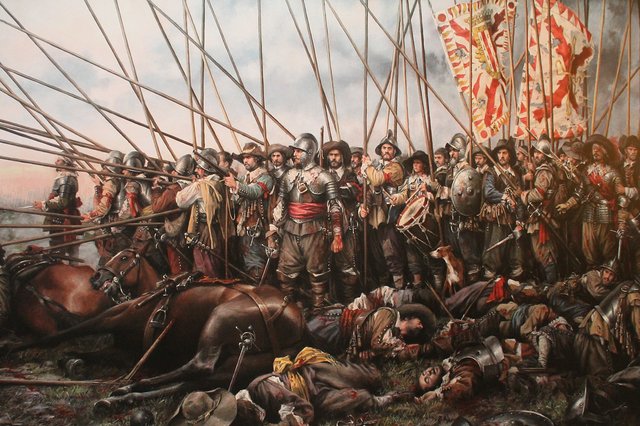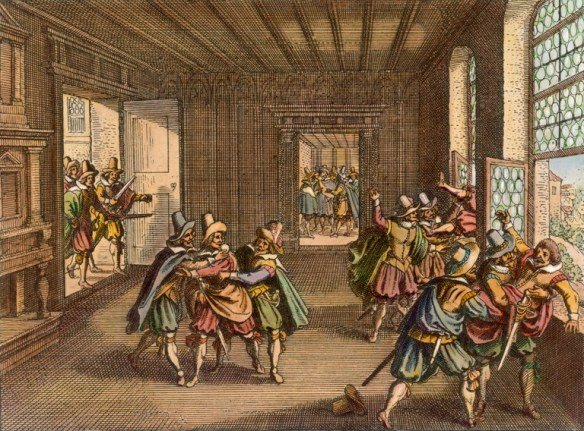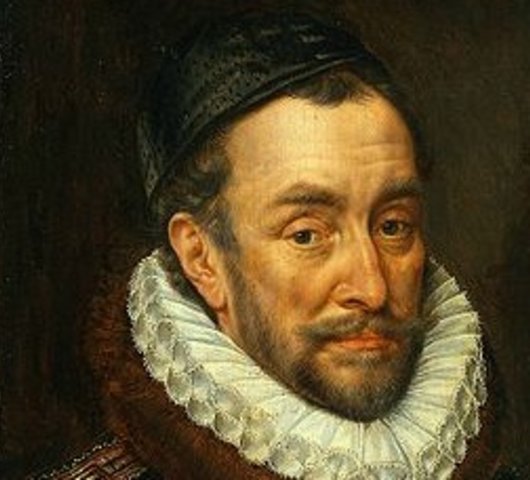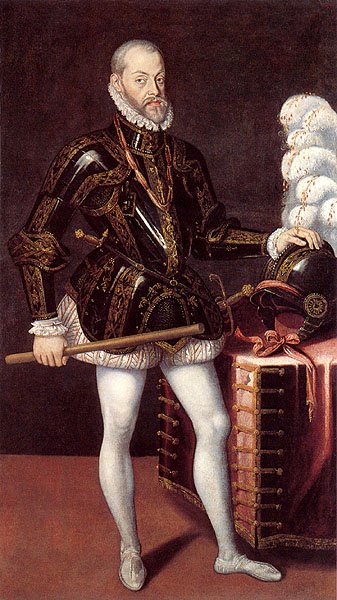Europe's Religion Warfare
Europe's Religion Warfare

Image Source
Amid the period of 1525 until 1648, Europe was tormented by wars of religion. It is essential to perceive, in any case, that while religion was given as the explanation behind war, there were numerous different reasons also. These included money, land, economics, natural assets, and political power. These wars incorporated the Peasants' War of 1525 in the Holy Roman Empire, the Schmalkaldic War of the 1540s through 1555, a progressing battle between the Holy Roman Empire and the Turks, the Reconquista of the Spanish versus Muslims, the Hussite rebellion, and preachers and conquistadors versus Native Americans.
Religious battling and warfare spread with Protestantism. The radical new precept in Germany heated other stewing social tensions to the point of boiling, peasant revolts flared in 1525, bringing about disarray and bloodshed across Austria, Switzerland and southern Germany. Well off landowners were the objective of discouraged rebels requesting social equality and sharing of riches in common. Armies faithful to decision princes smothered the revolt, and the pioneers were executed. Martin Luther, boss initiator of the Reformation, betrayed the rebels and defended the authorities' moves to put them down.
The Peace of Augsburg in 1555 pronounced the Prince's religion to be the official religion of a district or nation. This brought about the acknowledgment of toleration of Lutheranism in Germany by Catholics. At the point when a new leader of an alternate religion took power, expansive groups needed to convert religions. The vast majority observed this to be reasonable, and the process did not end until 1648. In northern Europe, the middle class tended to be Protestant, which related with their work ethic and philosophy. Peasants promptly converted religions in order to get occupations.
With the Treaty of Cateau-Cambresis in 1559, Spain and France consented to quit battling with each other in order to join against their common Protestant risk, especially Calvinism, which was viewed as to a greater extent a danger than Lutheranism.

Image Source
In France, religious civil war occurred from 1562 to 1598 amongst Catholics and Protestants. The crown usually bolstered the Catholics however occasionally moved sides, while the nobility was separated among the two camps. The three driving families in the country went after control of France. These families were the Valois family, which was as of now in power and was Catholic, the Bourbon family, which comprised of Huguenots, and the Guise family, who was additionally Catholic.
Eventually, the Bourbon family won the war, yet its pioneer Henry of Navarre was not able be crowned on the grounds that the emphatically Catholic city of Paris close itself down. Henry put Paris under a year of attack before finally choosing to convert to Catholicism himself in 1593. The civil war in France was ended by the Edict of Nantes in 1598, which reaffirmed that Catholicism was the official religion in France, yet in addition conceded a critical level of religious and political flexibility to Protestants.
Henry IV could be depicted as a politique , or one who thinks more about his country's peace and success than he does the enforcement of religious toleration.
In 1566, on the Assumption of the Virgin day, a group of Calvinists in the Netherlands raged Catholic places of worship, obliterating statutes and relics in a town only outside of Antwerp. Dutch Calvinists hated the Catholic religion and their contentions with the religion, and also Spanish King Philip II's profound devoutness and close-mindedness toward different religions. The high nobility begged him for more resilience yet some of them were killed for their rudeness.
One of the hidden reasons was that Philip needed to set up an outright government in the Netherlands and the religious issue gave him an approach to put weight on the parliament. William of Orange got away to Germany from where he endeavored to induce a rebellion from 1568 onwards however with little accomplishment at first. In 1570 the seaside locales got hit by a climate related debacle, the All Saints surge that left numerous districts crushed and the Spanish authorities demonstrated little sympathy.

Image Source
William of Orange, at that point energized pirates, to attack the ports of the drift. In 1572 the small town of Brielle was taken by what were close to outlaws, welcomed enthusiastically by the populace. The town announced itself for the sovereign of Orange and this illustration was trailed by various different towns in the generally distant provinces of Holland and Zeeland.
Philip sent Spanish troops accordingly. They took Naarden and Haarlem and caused ghastly enduring on the populace. Different towns demonstrated far harder to take and this made Philip come up short on money. In what wound up plainly known as the Spanish Fury, in November of 1576, Philip's unpaid hired soldier armies assaulted the city of Antwerp killing 7,000 out of 11 days. Antwerp was by a long shot the wealthiest city at the time and the persuasive merchants got the parliament to assemble and fund-raise to pay off the pillaging hired soldiers.
By doing as such the parliament basically assumed control from the king in far Madrid and this was the exact opposite thing the king needed. He sent more troops with a final proposal to the parliament to surrender or something bad might happen and delegated the Duke of Parma as the new governor of the Netherlands. In 1579, the southern ten provinces of the Netherlands, which were Catholic, marked the Union of Arras, communicating dependability to Philip. Amid that same year, William of Orange united seven northern states in the Union of Utrecht, which framed the Dutch Republic that openly restricted Philip and Spain.
In 1581, the Spanish army was sent to retake the United Provinces of the Netherlands, or the Dutch Republic, who had quite recently pronounced their independence. On July 10, 1584, William of Orange was killed, and after his death, the Duke of Parma gained ground in his reconquest, catching noteworthy parts of the Dutch Republic. In any case, England, under the initiative of Elizabeth I, helped the Dutch with troops and stallions, and accordingly Spain was never ready to recapture control of the north.

Image Source
Spain finally perceived Dutch independence in 1648. Catholic Philip II of Spain wanted to expel Elizabeth I of England from the position of authority after her rise to power following "Bloody" Mary Tudor's fall to sickness. Philip was fundamentally irate over Elizabeth's actions against English Catholics, however he was likewise vexed because of assaults by English privateers upon Spanish vessels, Elizabeth's helping adversaries of Spain, for example, the Netherlands, and the execution of Mary, Queen of Scots.
Philip conceived an arrangement to attack England. The four segments of this arrangement were to bring a substantial army into the Netherlands under the lead of the Duke of Parma and get them arranged to attack England. Also, the Duke of Medina-Sardonia would set up a huge fleet with additional men, and prepare the men to get together with the Duke of Parma's army. At that point, Spain would utilize its fleet to win control of the English Channel and secure the Duke of Parma's attacking power as it crossed.
Finally, the troops would attack England and power Elizabeth to consent to Spain's requests which is to allow English Catholics to venerate in how they would have preferred, to quit helping Protestant Dutch rebels in the Spanish Netherlands, and to pay reparations for the cost of the intrusion and additionally English harm to Spanish ships. Philip did not, notwithstanding, have any intent to overcome England - he just wanted Elizabeth to surrender to Spain's requests. Despite the fact that on 29 July 1587, Pope Sixtus V had allowed Papal authority to topple Elizabeth, who had been announced an apostate by Pope Pius V, and place whomever he picked on the position of authority of England.

Image Source

References:
https://en.wikipedia.org/wiki/History_of_Europe
https://en.wikipedia.org/wiki/Religion_in_Europe
https://simple.wikipedia.org/wiki/Catholicism
https://en.wikipedia.org/wiki/European_wars_of_religion
https://en.wikibooks.org/wiki/European_History/Religious_Wars_in_Europe
@juvyjabian very informative article. I think, more future battle will be occur because of religious issues. what do you think about this?
Religious battle never stop since then, only that nowadays, no more killings.
I see, you have done the same here as well. Rephrased the whole article from https://books.google.com/books?id=72VPAgAAQBAJ&lpg=PA75&dq=%22In%201572%20the%20small%20town%20of%20Brielle%20was%20taken%22&pg=PA73#v=onepage&q&f=false
Source: A Pocket Guide to European History, Chapter 5
Horrible suceso
Esos españoles >:(